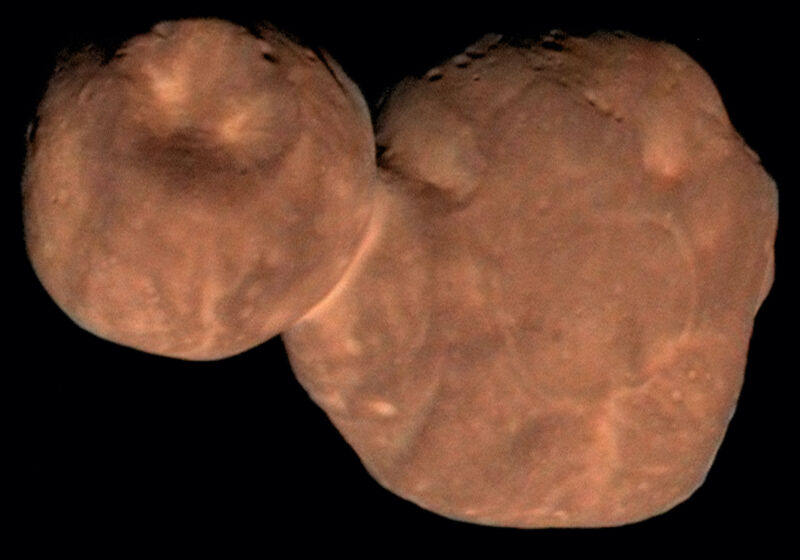
Enlarge (credit: NASA/JHU APL/SWRI/Roman Tkachenko)
Following its successful rendezvous with Pluto, the New Horizons spacecraft was sent on towards a smaller object out in the Kuiper Belt. As it shot past, the spacecraft captured images of a small world consisting of two very distinct lobes, with properties that scientists found a bit confusing. But details would have to wait, as the combination of distance and power budget meant that transmitting much of New Horizons' data back to Earth was a slow process.
The wait for that data is now over, as the high-resolution imagery is now available, and scientists have used it to try to better understand the formation and structure of what is now known as Arrokoth (named for the Powhatan word for "sky"). While the data doesn't answer every question we might have about Arrokoth, it does give us some very good ideas about how such a strange structure could have formed.
Can’t stay long
New Horizons was the fastest probe as launched from Earth (others have since picked up more speed thanks to gravity assists), and Arrokoth is very small, meaning the probe had to get rather close before it could be imaged in any detail. That left a narrow window for gathering data during the flyby, but the papers released today details just how narrow it was. As little as two days before the closest pass, Arrokoth was still showing up as a single pixel in New Horizons' cameras. It didn't grow larger than 10 pixels until about a half day before. So the vast majority of the data comes from a window that's just 12 hours wide.
No comments:
Post a Comment